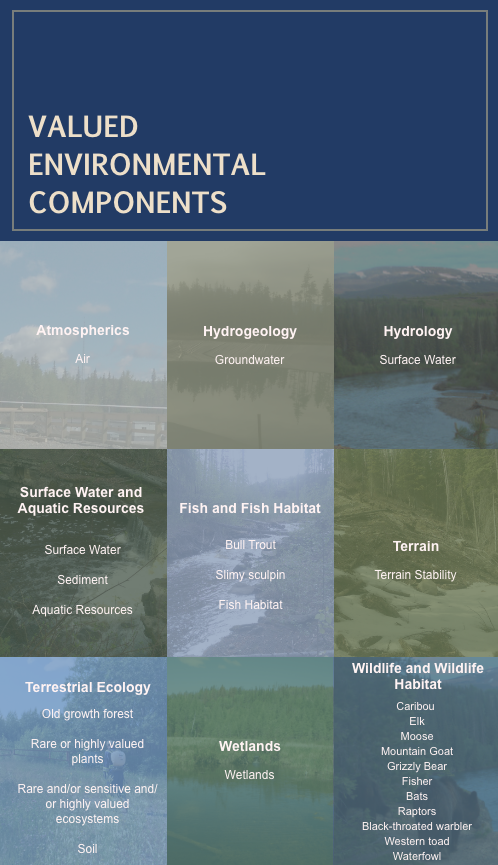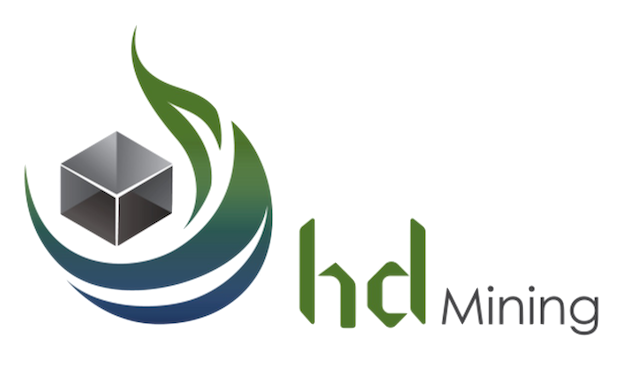Our Environmental Commitment
HD Mining believes that being a steward of the environment means minimizing the impact to the environment from our operations and effectively reclaiming the site upon completion of activities. The Murray River Project has been engineered to protect the environment during construction and operation including, air, surface and groundwater, and wildlife.
HD Mining International is committed to strong environmental protection measures and has completed technical analysis on the land, minerals and water within the project area.
We've developed valued environmental component lists and management plans to guide our operations, ensuring the health and safety of our workers, the community, the environment and protection for any archaeological sites discovered in the course of our activities.
Our Valued Environmental Components
Valued components (VCs) are "receptors" within which each phase of the Project may interact with that component. Potential VCs are identified and scoped during the environmental assessment process based on engagement and feedback from stakeholders (e.g., public, government, First Nations), and based on scientific/professional judgement.

Management Plans Supporting Our Environment:
- Air Quality and Dust Control Management Plan - To monitor emissions from Project activities and establish measures to mitigate emissions from Project activities to meet air quality legislative requirements.
- Aquatic Effects Monitoring Program - To evaluate the effects of effluent discharges, seepages, and mining-related disturbances on the aquatic receiving environment.
- Fish and Fish Habitat Management Plan - Ensures protection of fish supporting commercial, recreational, or Aboriginal (CRA) fisheries by avoiding harm where possible, mitigating or offsetting damage through operational controls, and safeguarding listed species at risk.
- Fuel and Spill Control Plan - Outlines strategies for managing the handling, transportation, and storage of materials to minimize spill risks and includes a conceptual plan for emergency response to protect people and the environment..
- Groundwater and Surface Water Management Plan - Ensures environmental controls keep clean water pure, site-impacted water reused, and discharged water compliant with quality standards, while protecting ecologically sensitive sites and minimizing impacts on fish and wildlife habitats.
- Runoff, Erosion and Sediment Control Plan - Aims to protect the health and safety of employees and the public, minimize soil erosion at the project site, and prevent sediment release that could harm ecosystem functions, water quality, vegetation communities, and dependent fish and wildlife.
- Selenium Management Plan - Aims to identify and manage selenium-related environmental risks to the aquatic ecosystem of the project, ensuring timely mitigation through adaptive management and continuous monitoring.
- Subsidence Management Plan - Describes the extraction/subsidence management strategies, procedures, controls and monitoring programs that are to be implemented for the management of effects to infrastructure and environmental values caused by the extraction of underground longwall panels.
- Waste Management Plan (Refuse and Emissions) - Documents our approach to waste management and outlines strategies that will be used to process the various waste streams to ensure maximum environmental protection.
- Wetland Management Plan - To minimize loss of wetland extent and maintain habitat function associated with the area’s wetlands within potentially affected areas.
- Wildlife Management Plan - Focuses on reducing the risk of direct wildlife mortality, mitigating the potential for human-wildlife conflicts, and minimizing the level of disturbance to wildlife during Project construction and operation.
Visit our website regularly for updates and information on how to get involved with our projects. Your engagement helps us ensure that our operations benefit everyone involved.


